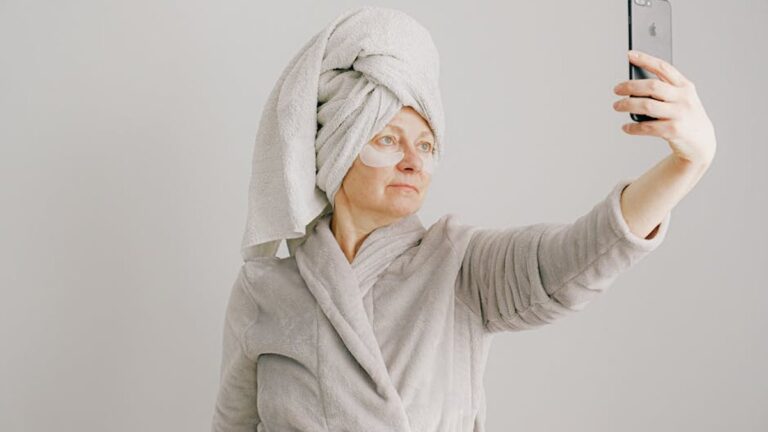Combat SAD: Light Therapy & Mood-Boosting Strategies for November
Understanding Seasonal Affective Disorder (SAD)
As the days shorten and the leaves fall, many people experience more than just a touch of the blues. They might be struggling with SAD, or Seasonal Affective Disorder. SAD is a type of depression that’s related to changes in seasons and typically begins and ends at about the same times every year. For most, SAD starts in the fall and continues into the winter months, sapping your energy and making you feel moody.
While the exact cause of SAD remains unknown, several factors are believed to play a role. These include:
- Disruption of the Circadian Rhythm: The reduced sunlight in fall and winter can disrupt your body’s internal clock (circadian rhythm), which regulates your sleep-wake cycle and mood.
- Serotonin Levels: A drop in serotonin, a neurotransmitter that affects mood, might play a role in SAD. Reduced sunlight can lead to a decrease in serotonin.
- Melatonin Levels: The change in season can disrupt the balance of the body’s melatonin level, which plays a role in sleep patterns and mood.
It’s estimated that up to 10 million Americans are affected by SAD, and many more experience a milder form of winter blues. Recognizing the symptoms is the first step in Combatting SAD.
Common Symptoms of SAD
The symptoms of SAD are similar to those of major depression, but they are seasonal. Look out for these common signs:
- Feeling sad, hopeless, or irritable
- Loss of interest in activities you once enjoyed
- Changes in appetite or weight, often craving carbohydrates
- Difficulty sleeping or oversleeping
- Fatigue and low energy
- Difficulty concentrating
- Feeling sluggish, heavy, or agitated
Light Therapy: A Bright Solution for SAD
Light therapy, also known as phototherapy, is a cornerstone treatment for SAD. It involves sitting near a special light therapy box that emits a bright light that mimics natural outdoor light. This light is believed to affect brain chemicals linked to mood, easing SAD symptoms.
How Light Therapy Works
The science behind light therapy is quite simple. The bright light from the box stimulates the retina in your eyes, which then sends signals to the brain. These signals can help:
- Regulate your circadian rhythm, improving sleep and wakefulness.
- Increase serotonin levels, boosting mood.
- Suppress melatonin production during the day, promoting alertness.
A clinical study published in the Journal of Affective Disorders found that light therapy significantly reduced depressive symptoms in individuals with SAD compared to a placebo. The key is to use the light therapy box correctly.
Tips for Effective Light Therapy
- Choose the Right Light Box: Look for a light therapy box that emits 10,000 lux of light and filters out harmful UV rays.
- Timing is Key: Most experts recommend using a light therapy box first thing in the morning, typically for 20-30 minutes.
- Positioning: Place the light box about 12-24 inches away from your face, slightly off to one side. You don’t need to stare directly at the light, but your eyes should be open and exposed to it.
- Consistency: For best results, use your light therapy box every day, even on sunny days.
- Consult Your Doctor: Before starting light therapy, talk to your doctor, especially if you have a pre-existing eye condition or are taking medication that increases your sensitivity to light.
Mood-Boosting Strategies for November and Beyond
While light therapy is a powerful tool in Combatting SAD, it’s most effective when combined with other mood-boosting strategies. Here are some practical tips to help you navigate the darker months:
Embrace the Outdoors (Even When It’s Cold!)
Even on cloudy days, getting outside for a walk or spending time in nature can be beneficial. Natural light, however dim, is still better than no light at all. Bundle up and take a brisk walk, visit a local park, or simply sit by a window to soak up some sunlight. Exercise is also a natural mood booster.
Nourish Your Body with a Healthy Diet
What you eat can significantly impact your mood. Focus on a diet rich in fruits, vegetables, whole grains, and lean protein. Limit processed foods, sugary drinks, and excessive caffeine, as these can worsen SAD symptoms. Consider incorporating foods rich in Vitamin D, as Vitamin D deficiency has been linked to depression.
Stay Socially Connected
Winter depression can lead to social isolation, but staying connected with friends and family is crucial for maintaining your mental well-being. Make an effort to schedule regular social activities, even if you don’t feel like it. A simple phone call or a virtual coffee date can make a difference.
Practice Mindfulness and Relaxation Techniques
Stress can exacerbate SAD symptoms. Incorporate mindfulness and relaxation techniques into your daily routine to manage stress and improve your mood. Try meditation, deep breathing exercises, yoga, or spending time on hobbies you enjoy.
Consider Cognitive Behavioral Therapy (CBT)
CBT is a type of therapy that helps you identify and change negative thought patterns and behaviors that contribute to depression. CBT specifically designed for SAD focuses on strategies to cope with the winter months and can be very effective.
Supplement Wisely
Some supplements may help alleviate SAD symptoms. Vitamin D, St. John’s Wort, and SAMe are commonly used. However, it’s essential to talk to your doctor before taking any supplements, as they can interact with medications or have side effects.
A November Mood Boost: Taking Action Against SAD
Combatting SAD requires a proactive approach. By understanding the condition, utilizing light therapy effectively, and implementing mood-boosting strategies, you can navigate the winter months with greater ease and improve your overall well-being. Don’t let SAD steal your joy – take charge of your mental health this November and beyond.
If you suspect you have SAD, don’t hesitate to seek professional help. A doctor or mental health professional can provide an accurate diagnosis and recommend the most appropriate treatment plan for your individual needs. Remember, you’re not alone, and there are effective ways to manage and overcome Seasonal Affective Disorder. Start small, be consistent, and prioritize your mental health. Your future self will thank you.
References
-
National Institute of Mental Health
– National Institute of Mental Health research and resources. -
American Psychological Association
– American Psychological Association mental health guidance. -
World Health Organization Mental Health
– Global mental health initiatives and research.






